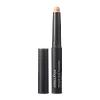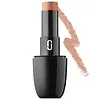What's inside
What's inside
 Key Ingredients
Key Ingredients

 Benefits
Benefits

 Concerns
Concerns

 Ingredients Side-by-side
Ingredients Side-by-side

CI 77891
Cosmetic ColorantEthylhexyl Palmitate
EmollientMica
Cosmetic ColorantDipentaerythrityl Hexahydroxystearate/Hexastearate/Hexarosinate
Skin ConditioningPentaerythrityl Tetraisostearate
EmollientSilica
AbrasiveHydrogenated Polyisobutene
EmollientPhytosteryl/Isostearyl/Cetyl/Stearyl/Behenyl Dimer Dilinoleate
Skin ConditioningMicrocrystalline Wax
Emulsion StabilisingIsononyl Isononanoate
EmollientCaprylic/Capric Triglyceride
MaskingCI 77492
Cosmetic ColorantPolyethylene
AbrasiveVinyl Dimethicone/Methicone Silsesquioxane Crosspolymer
Ceresin
Emulsion StabilisingCI 77491
Cosmetic ColorantSorbitan Sesquioleate
EmulsifyingLauroyl Lysine
Skin ConditioningStearalkonium Hectorite
Gel FormingTocopheryl Acetate
AntioxidantCI 77499
Cosmetic ColorantPropylene Carbonate
SolventCaprylyl Glycol
EmollientEthylhexylglycerin
Skin ConditioningParfum
MaskingOrbignya Oleifera Seed Oil
Emollient1,2-Hexanediol
Skin ConditioningOryza Sativa Powder
Mother Of Pearl
AbrasiveMineral Salts
Skin ConditioningWater
Skin ConditioningButylene Glycol
HumectantCamellia Sinensis Leaf Extract
AntimicrobialPhenoxyethanol
PreservativeCI 77891, Ethylhexyl Palmitate, Mica, Dipentaerythrityl Hexahydroxystearate/Hexastearate/Hexarosinate, Pentaerythrityl Tetraisostearate, Silica, Hydrogenated Polyisobutene, Phytosteryl/Isostearyl/Cetyl/Stearyl/Behenyl Dimer Dilinoleate, Microcrystalline Wax, Isononyl Isononanoate, Caprylic/Capric Triglyceride, CI 77492, Polyethylene, Vinyl Dimethicone/Methicone Silsesquioxane Crosspolymer, Ceresin, CI 77491, Sorbitan Sesquioleate, Lauroyl Lysine, Stearalkonium Hectorite, Tocopheryl Acetate, CI 77499, Propylene Carbonate, Caprylyl Glycol, Ethylhexylglycerin, Parfum, Orbignya Oleifera Seed Oil, 1,2-Hexanediol, Oryza Sativa Powder, Mother Of Pearl, Mineral Salts, Water, Butylene Glycol, Camellia Sinensis Leaf Extract, Phenoxyethanol
Hydrogenated Polydecene
EmollientSilica
AbrasiveDiphenylsiloxy Phenyl Trimethicone
Skin ConditioningOctyldodecanol
EmollientCyclopentasiloxane
EmollientPolyethylene
AbrasiveDipentaerythrityl Hexahydroxystearate/Hexastearate/Hexarosinate
Skin ConditioningHydrogenated Polyisobutene
EmollientCopernicia Cerifera Cera
EmollientParaffin
PerfumingAcrylates/Dimethicone Copolymer
Skin ConditioningTriethoxycaprylylsilane
Phytosteryl Isostearyl Dimer Dilinoleate
EmollientCera Microcristallina
Emulsion StabilisingSorbitan Sesquioleate
EmulsifyingMica
Cosmetic ColorantGlycerin
HumectantDipropylene Glycol
HumectantWater
Skin Conditioning1,2-Hexanediol
Skin ConditioningIsopropyl Palmitate
EmollientTocopheryl Acetate
AntioxidantQuaternium-18 Bentonite
Caprylyl Glycol
EmollientDimethicone
EmollientPolyglyceryl-10 Oleate
Skin ConditioningHydrogenated Lecithin
EmulsifyingPropylene Carbonate
SolventEthylhexylglycerin
Skin ConditioningAdenosine
Skin ConditioningQuartz
AbrasiveButylene Glycol
HumectantTremella Fuciformis Polysaccharide
Emulsion StabilisingGlobularia Alypum Leaf Extract
Skin ConditioningEthyl Hexanediol
SolventTocopherol
AntioxidantBHT
AntioxidantTitanium Dioxide
Cosmetic ColorantIron Oxides
CI 77742
Cosmetic ColorantHydrogenated Polydecene, Silica, Diphenylsiloxy Phenyl Trimethicone, Octyldodecanol, Cyclopentasiloxane, Polyethylene, Dipentaerythrityl Hexahydroxystearate/Hexastearate/Hexarosinate, Hydrogenated Polyisobutene, Copernicia Cerifera Cera, Paraffin, Acrylates/Dimethicone Copolymer, Triethoxycaprylylsilane, Phytosteryl Isostearyl Dimer Dilinoleate, Cera Microcristallina, Sorbitan Sesquioleate, Mica, Glycerin, Dipropylene Glycol, Water, 1,2-Hexanediol, Isopropyl Palmitate, Tocopheryl Acetate, Quaternium-18 Bentonite, Caprylyl Glycol, Dimethicone, Polyglyceryl-10 Oleate, Hydrogenated Lecithin, Propylene Carbonate, Ethylhexylglycerin, Adenosine, Quartz, Butylene Glycol, Tremella Fuciformis Polysaccharide, Globularia Alypum Leaf Extract, Ethyl Hexanediol, Tocopherol, BHT, Titanium Dioxide, Iron Oxides, CI 77742
Ingredients Explained
These ingredients are found in both products.
Ingredients higher up in an ingredient list are typically present in a larger amount.
1,2-Hexanediol is a synthetic liquid and another multi-functional powerhouse.
It is a:
- Humectant, drawing moisture into the skin
- Emollient, helping to soften skin
- Solvent, dispersing and stabilizing formulas
- Preservative booster, enhancing the antimicrobial activity of other preservatives
Butylene Glycol (or BG) is used within cosmetic products for a few different reasons:
Overall, Butylene Glycol is a safe and well-rounded ingredient that works well with other ingredients.
Though this ingredient works well with most skin types, some people with sensitive skin may experience a reaction such as allergic rashes, closed comedones, or itchiness.
Learn more about Butylene GlycolCaprylyl Glycol is a humectant and emollient, meaning it attracts and preserves moisture.
It is a common ingredient in many products, especially those designed to hydrate skin. The primary benefits are retaining moisture, skin softening, and promoting a healthy skin barrier.
Though Caprylyl Glycol is an alcohol derived from fatty acids, it is not the kind that can dry out skin.
This ingredient is also used as a preservative to extend the life of products. It has slight antimicrobial properties.
Learn more about Caprylyl GlycolWe don't have a description for Dipentaerythrityl Hexahydroxystearate/Hexastearate/Hexarosinate yet.
Ethylhexylglycerin (we can't pronounce this either) is commonly used as a preservative and skin softener. It is derived from glyceryl.
You might see Ethylhexylglycerin often paired with other preservatives such as phenoxyethanol. Ethylhexylglycerin has been found to increase the effectiveness of these other preservatives.
Hydrogenated Polyisobutene is a synthetic polymer. Polymers are compounds with high molecular weight. Hydrogenated Polyisobutene is an emollient and texture enhancer.
In one study, Hydrogenated Polyisobutene showed better skin hydration levels than Caprylic/Capric Triglyceride. As an emollient, it helps keep your skin soft and hydrated by trapping moisture in.
Hydrogenated Polyisobutene is often used as a mineral oil replacement.
Learn more about Hydrogenated PolyisobuteneMica is a naturally occurring mineral used to add shimmer and color in cosmetics. It can also help improve the texture of a product or give it an opaque, white/silver color.
Serecite is the name for very fine but ragged grains of mica.
This ingredient is often coated with metal oxides like titanium dioxide. Trace amounts of heavy metals may be found in mica, but these metals are not harmful in our personal products.
Mica has been used since prehistoric times throughout the world. Ancient Egyptian, Indian, Greek, Roman, Aztec, and Chinese civilizations have used mica.
Learn more about MicaPolyethylene is a synthetic ingredient that helps the skin retain moisture. It is a polymer.
It is also typically used within product formulations to help bind solid ingredients together and thicken oil-based ingredients. When added to balms and emulsions, it helps increase the melting point temperature.
This ingredient is a solvent. It helps dissolve active ingredients and alter the texture of products.
Propylene Carbonate is commonly used in makeup and with clay, such as montmorillonite or bentonite.
Studies show this ingredient to be safe for cosmetics. When it is undiluted, it can cause skin irritation. (It is always diluted in skincare and makeup). This ingredient is water-soluble.
Propylene Carbonate is created from propylene glycol and carbonic acid.
Learn more about Propylene CarbonateSilica, also known as silicon dioxide, is a naturally occurring mineral. It is used as a fine, spherical, and porous powder in cosmetics.
Though it has exfoliant properties, the function of silica varies depending on the product.
The unique structure of silica enhances the spreadability and adds smoothness, making it a great texture enhancer.
It is also used as an active carrier, emulsifier, and mattifier due to its ability to absorb excess oil.
In some products, tiny microneedles called spicules are made from silica or hydrolyzed sponge. When you rub them in, they lightly polish away dead skin layers and enhance the penetration of active ingredients.
Learn more about SilicaSorbitan Sesquioleate is derived from sorbitol and oleic acid. It is an emulsifier and prevents ingredients from separating.
Specifically, this ingredient is a water-in-oil emulsifier, meaning it helps water dissolve into oil.
Some studies suggest this ingredient may cause irritation in some people. If you are unsure, it is best to patch test.
This ingredient may not be Malassezia folliculitis, or fungal-acne safe.
Learn more about Sorbitan SesquioleateTocopheryl Acetate is AKA Vitamin E. It is an antioxidant and protects your skin from free radicals. Free radicals damage the skin by breaking down collagen.
One study found using Tocopheryl Acetate with Vitamin C decreased the number of sunburned cells.
Tocopheryl Acetate is commonly found in both skincare and dietary supplements.
Learn more about Tocopheryl AcetateWater. It's the most common cosmetic ingredient of all. You'll usually see it at the top of ingredient lists, meaning that it makes up the largest part of the product.
So why is it so popular? Water most often acts as a solvent - this means that it helps dissolve other ingredients into the formulation.
You'll also recognize water as that liquid we all need to stay alive. If you see this, drink a glass of water. Stay hydrated!
Learn more about Water